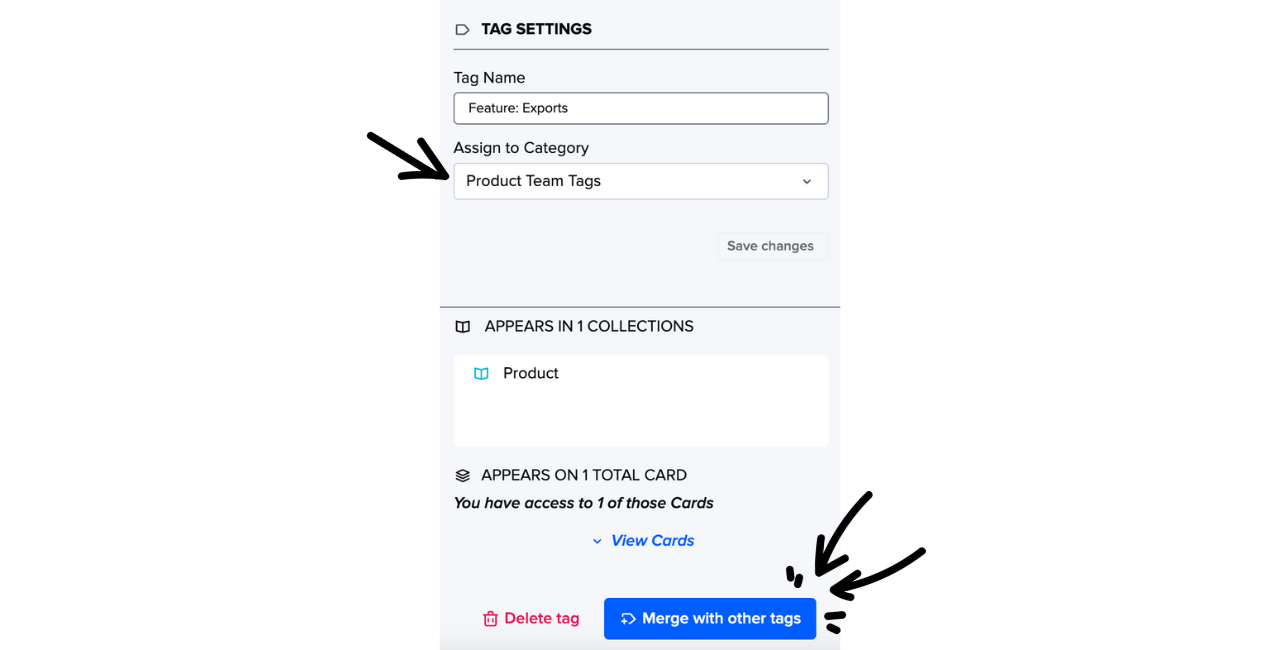Bulk-Managing Tags in the Tag Manager
The Tag Manager in Guru is an essential tool for organizing and maintaining your workspace’s tags. This guide walks you through how to merge, delete, categorize, and manage tags—plus build a tag strategy that scales with your team.
Access RequiredAs a Guru Admin, you can add tags to any Card. As a Collection Owner or a relevant custom role, you can only add tags to Cards that are in Collections to which you have access.
Best Practices
Merging tags
Combine duplicate or similar tags into a single Primary Tag to streamline your tag structure.
- Go to Settings > Tag Management in the Guru web app.
- In the Tags pane, select the tag you want to keep (the “Primary Tag”).
- Click Merge with other tags.
- Drag tags to be merged into the “Primary Tag” drop area.
- Click Merge tags.
- Confirm the merge by clicking Delete to remove the duplicate tags and update impacted Cards.

Deleting tags
Remove tags that are no longer relevant or needed.
- Go to Settings > Tag Management.
- Select the tag you wish to delete.
- Click Delete tag and confirm the number of impacted Cards.
Managing tag categories
Group related tags under categories to maintain a scalable, intuitive tag structure.
Creating a tag category
- Go to Settings > Tag Management.
- In the Create new tag category field, enter a name and press Enter.
Adding a tag to a category
- Drag and drop an existing tag into the desired category.
- Or, create a new tag within a category by typing in the field and pressing Enter.
Editing a tag’s category
- Drag the tag to a new category.
- Or, click the tag to open Tag Settings and reassign its category.
Deleting a tag category
- In Tag Management, find the category to delete.
- Hover over the category name and click the trash can icon. Deleting a tag category will remove all tags within it from any Cards where they are applied.
TipTo quickly delete multiple tags, group them into a category first, then delete the category.
Want a closer look at some key Guru features and best practices?Check out our events page for demos, workshops, new release roundups, Getting Started bootcamp, guest panelists and more! For upcoming live events and a series of past recordings: Click here to register
Updated 1 day ago
